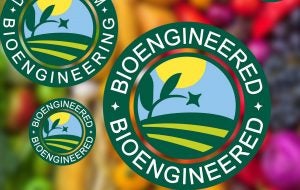The long-running debate about labeling genetically modified foods has obscured more pressing issues of food justice
On Jan. 1, the long-running public debate about labeling genetically modified foods entered a new phase. A U.S. federal rule went into effect mandating that food companies disclose whether their products contain a detectable amount of recombinant DNA — genetic material from multiple sources combined through lab techniques to confer desired traits. The new policy requires that those foods be labeled as “bioengineered,” or carry a QR code and phone number that customers can use to find that information.
Since the law requiring the rule change was passed in 2016, it has sparked a predictable backlash. Groups like the nonprofit Center for Food Safety and a coalition of advocates known as Citizens for GMO Labeling have pushed against the regulation, arguing it doesn’t do enough to protect consumers. In a 2020 complaint filed in a California district court, CFS and co-plaintiffs maintained that, instead of “bioengineered,” the rule should have required labels to use the more widely recognizable terms “genetically engineered” or “genetically modified.”
The groups also oppose many of the rule’s numerous exemptions, including for foods that are made with genetically engineered crops but don’t have detectable levels of recombinant DNA in the final product — foods like sugar, high fructose corn syrup, and meat and milk from cows raised on genetically modified feed. The critics argue that these and other provisions, including the option to use a QR code instead of a more readily accessible on-label disclosure, violate “the public’s right to know how their food is produced.”

But as a writer and activist who’s been following the controversy over genetically modified organisms, or GMOs, for the better part of a decade, I’ve come to see the debate over food labels as a red herring. Now more than ever, it’s clear that the struggle for food justice involves issues far too big and complex to fit on any label.
That’s because it was arguably never the recombinant DNA technology that most naysayers were really mad at. (After all, the science is clear that GMO foods are not inherently more harmful than their non-GMO counterparts.) Rather, the GMO debate, ever since it first heated up in the early 2010s, was a pervasive and nebulous proxy for everything food-related that people worry about. Genetic engineering became a symbol of large agribusiness and its perceived seedy practices, the stark power imbalances in the food system, and the harm the food system has long caused the planet and its most vulnerable inhabitants.
Many of the crops antagonized by GMO opponents — like the tens of millions of acres of field corn grown in America that go largely to the livestock feed used to fuel the environmentally and ethically dubious meat industry, the ethanol that powers cars on ever-expanding highways, and the nutrient-sparse foods on convenience store shelves — are indeed problematic, but not by virtue of their recombinant DNA. Instead of contending with the complexity inherent in building a more equitable and sustainable food system, opponents of questionable agricultural practices took an ideological stance against genetic engineering itself — and championed labels as a solution.

For some people, the act of avoiding GMOs seemed to offer a soothing sense of having fulfilled some vague health need or social responsibility. The Non-GMO Project, a non-profit that lends its imprimatur to products it deems to be free of genetic modification, began catering to this sensibility in 2007. Thousands of products in the U.S. and Canada now bear its label.
But labels — whether they read “GMO,” “non-GMO,” “bioengineered,” or otherwise — can only carry so much information. They haven’t been able to convey much about the working conditions on the farms and in the facilities where the food was made, or the subsidies pocketed by the producers, or the chemicals and intellectual property employed along the supply chain, or the size of the companies involved. They don’t even indicate where on the natural-to-unnatural spectrum a food product falls. For instance, wheat that is widely used to make breads and pastas has been subjected to mutation breeding — the intentional exposure of seeds or plants to radiation or chemicals to induce random changes in the genome, in the hopes that some of those changes will confer desirable traits. Per strict definitions, this wheat isn’t considered genetically engineered (and can carry a Non-GMO Project label), despite having artificially altered DNA.
Instead of contending with the complexity inherent in building a more equitable and sustainable food system, opponents of questionable agricultural practices took an ideological stance against genetic engineering itself — and championed labels as a solution.
These days, movements to revolutionize the food system are up against something much larger than labels. These movements are grappling with the racism, sexism, classism, and ableism that’s built into the industry’s very fabric — from the ivory towers where food and agricultural research happens, to the American farmlands controlled primarily by White landowners, to the inequities in economic and physical access to nutritional and culturally relevant meals. They are dismantling injustice in the food system, along with larger systemic injustices that impact everything to do with wellbeing. They are on fire, and they are busy frying big fish.
Whether or not the new food labeling law survives the legal challenge, one thing is clear: As much as we might want to boil down the morality of our food choices into a label, making responsible decisions about what we eat isn’t that simple. I would like a label that tells me if any racism was involved in the making of my food, or whether any humans were harmed in the making of my food. But, for a slew of reasons, that’s not going to happen.
Do people have a “right to know” how their food was produced, even if it didn’t materially affect the end product? Sure, to an extent. Increased transparency from the makers of our food has historically been a good thing. Must it all be printed on a label? Impossible.
Kavin Senapathy is a freelance writer who covers science, health, parenting, and food, based in Madison, Wisconsin. She’s also co-founder and contributing editor at SciMoms.com. This article was originally published on Undark. Read the original article here.
![]()


